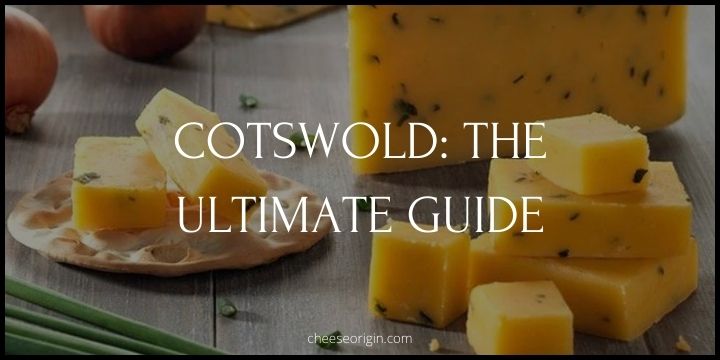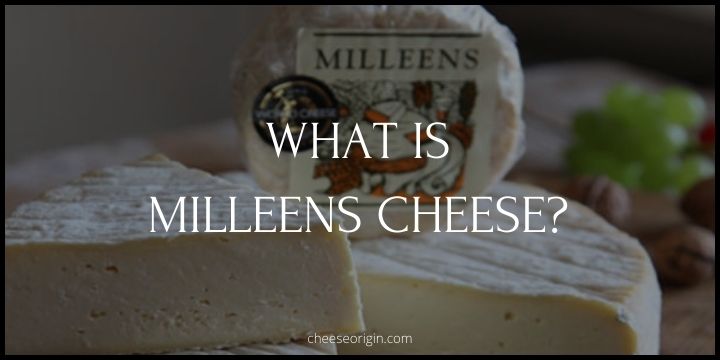What is Fourme d’Ambert? The Pillar of French Blue Cheeses
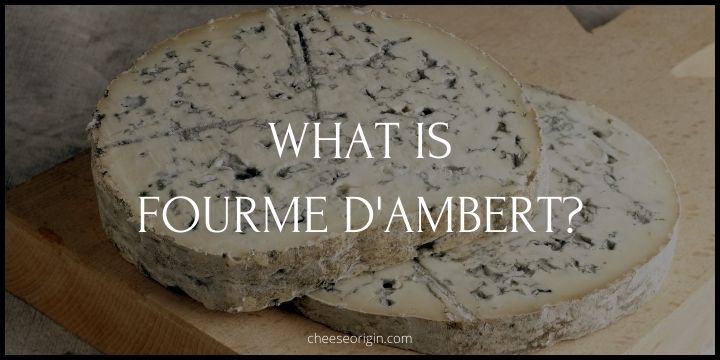
Welcome to the world of French gastronomy, where one cheese stands tall with a legacy as rich as its flavor – The Fourme d’Ambert. Woven into the narrative of France’s culinary history, this semi-hard blue cheese is more than just a delicacy; it’s a testament to time-honored tradition and a symbol of the country’s penchant for quality.
Hailing from the lush pastures of the Auvergne region, the Fourme d’Ambert carries the distinction of being one of France’s oldest cheeses. Its complex, creamy flavor profile and unique cylindrical shape have earned it a place of honor in the pantheon of French blue cheeses.
Quick Facts About Fourme d’Ambert
| Fact | Description |
|---|---|
| Origin | Originates from the Auvergne region in south-central France. |
| Type of Cheese | Semi-hard, blue-veined cheese. |
| Milk Source | Traditionally made from raw cow’s milk, but pasteurized versions are also available. |
| Aging Period | Typically aged for 28 days, but it can be aged up to 2 months for stronger flavor. |
| Texture & Flavor | Features a creamy and smooth texture with mild blue flavor and hints of mushrooms and earthy undertones. |
| Shape & Size | The cheese is usually cylindrical, about 19 cm high and 13 cm in diameter. Each cheese weighs approximately 2 kg. |
| Pairings | Pairs well with sweet wines like Sauternes or Port, or full-bodied reds like Burgundy. It also goes well with pears and walnuts. |
| Protected Designation | Had a Protected Designation of Origin (PDO) status since 1996, meaning it must be produced in a specific geographical area using traditional methods. |
| Production | It’s one of the oldest cheeses in France, with production dating back to the Roman period. |
What is Fourme d’Ambert?

Fourme d’Ambert, one of the oldest cheeses in France, is a testament to the country’s rich culinary heritage. Originating from the mountainous Auvergne region, this semi-hard, blue-veined cheese is a sublime blend of history, tradition, and gastronomic delight. Its name is derived from the ancient French term ‘forme’, referring to the mold in which the cheese is made.
Crafted originally from raw cow’s milk, Fourme d’Ambert carries a unique flavor profile that sets it apart from other blue cheeses. Its texture is creamy and smooth, with the characteristic blue veins providing a mild tang that balances out its overall richness. On the palate, it reveals subtle hints of mushrooms and earthy undertones, a flavor symphony that reflects the natural beauty of its mountainous birthplace.
But what truly makes Fourme d’Ambert special is its meticulous production process. Each wheel of cheese is carefully aged for at least 28 days, allowing it to develop its signature taste and aroma. Some variants are aged up to two months for those who prefer a stronger, more intense flavor.
The cheese is typically cylindrical in shape, standing about 19 cm high and 13 cm in diameter. Each cheese weighs approximately 2 kg, making it a smaller and more manageable size compared to many other traditional cheeses.
Beyond its culinary appeal, Fourme d’Ambert holds a Protected Designation of Origin (PDO) status. This means its production is restricted to a specific geographical area and must adhere to traditional methods, preserving its authenticity and quality.
What Does Fourme d’Ambert Taste Like?
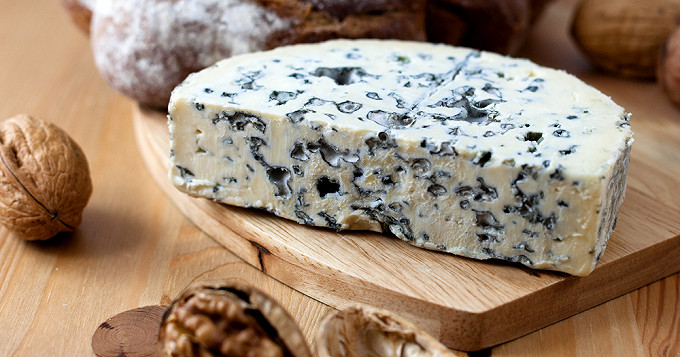
Fourme d’Ambert is renowned for its distinctive yet balanced flavor profile. It’s a semi-hard, blue-veined cheese with a creamy and smooth texture that provides a delightful mouthfeel.
The initial taste of Fourme d’Ambert is mild and a bit sweet, quickly followed by the characteristic tanginess of blue cheese. However, compared to other blue cheeses, its flavor is relatively gentle – not too sharp or overpowering. This makes it an excellent choice for those who are new to blue cheese or prefer milder varieties.
In terms of specific flavors, expect to find hints of mushrooms combined with earthy undertones. These subtle notes reflect the natural environment in which the cheese is produced, adding depth and complexity to its overall taste.
As the cheese ages, it develops a slightly stronger flavor, but it always maintains its initial creaminess. When perfectly ripe, Fourme d’Ambert can also exhibit slight hints of fruitiness and a buttery finish, making it a truly multifaceted cheese.
Fourme d’Ambert Tasting Notes
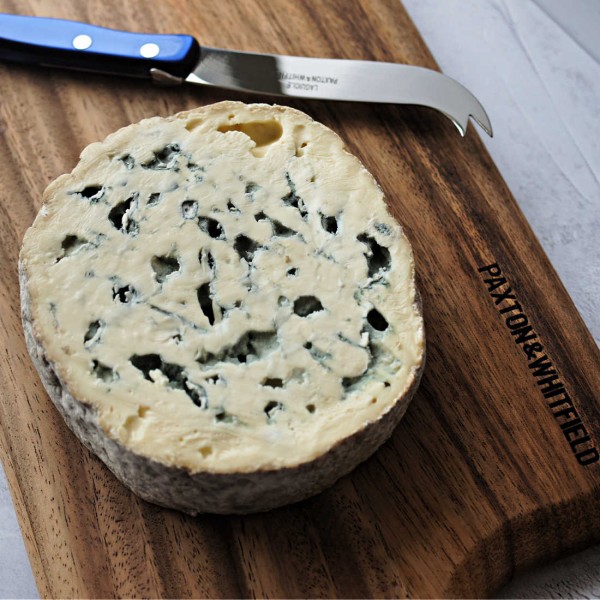
- Texture: Fourme d’Ambert has a creamy and smooth texture due to its semi-hard nature. This texture provides a pleasant mouthfeel, making it enjoyable to eat.
- Initial Flavor: The first taste of Fourme d’Ambert is mild and slightly sweet. This sweetness quickly gives way to the characteristic tanginess of blue cheese.
- Blue Cheese Character: Compared to other blue cheeses, Fourme d’Ambert is relatively gentle. Its blue cheese flavor is present but not overpowering, making it an excellent choice for those who prefer milder blue cheeses.
- Earthy Undertones: Fourme d’Ambert carries subtle hints of mushrooms and earthy undertones that add depth and complexity to its flavor profile. These flavors reflect the natural environment in which the cheese is produced.
- Aging: As the cheese ages, it develops a slightly stronger flavor while still maintaining its initial creaminess. When perfectly ripe, Fourme d’Ambert can also exhibit slight hints of fruitiness and a buttery finish.
- Pairings: Fourme d’Ambert pairs well with sweet wines like Sauternes or Port. It’s equally delicious when served with pears and walnuts or incorporated into various dishes. The cheese’s unique taste adds a touch of elegance and sophistication to any culinary experience.
How to Eat Fourme d’Ambert?
Fourme d’Ambert is a versatile cheese that can be enjoyed in various ways. Here are a few suggestions:
- On a Cheese Platter: Fourme d’Ambert makes for an excellent addition to any cheese board or platter. Its distinctive flavor and creamy texture pair well with fresh fruits like pears, apples, and figs. It also complements nuts such as walnuts and almonds.
- With Wine: This cheese is particularly well-suited to pairing with sweet wines. Try it with a glass of Sauternes, Port, or even a full-bodied red wine for a delightful contrast of flavors.
- In Cooking: You can also use Fourme d’Ambert in cooking. It melts beautifully, making it a great choice for gourmet pizzas, pasta dishes, or even in a creamy sauce over steak. It also adds a touch of elegance to salads and sandwiches.
- Dessert Pairings: Fourme d’Ambert pairs wonderfully with sweet accompaniments. Try it with honey, fig jam, or even dark chocolate for a unique dessert experience.
- Simply Solo: Of course, you can also enjoy Fourme d’Ambert all on its own. Let it sit at room temperature for about an hour before eating to allow the flavors to fully develop.
What is the Difference Between Fourme d’Ambert and Gorgonzola?
Fourme d’Ambert and Gorgonzola are both blue cheeses, but they have several differences due to their origin, production methods, and flavor profiles:
| Fourme d’Ambert | Gorgonzola | |
|---|---|---|
| Origin | France, specifically the Auvergne region | Italy, named after the town of Gorgonzola near Milan |
| Milk Used | Cow’s milk | Cow’s milk for Gorgonzola Dolce, a mix of cow’s and goat’s milk for Gorgonzola Piccante |
| Ageing Process | Aged for at least 28 days | Gorgonzola Dolce is aged for about 2 months, Gorgonzola Piccante for 3-4 months or more |
| Texture | Semi-hard with a creamy and smooth texture | Gorgonzola Dolce is soft and spreadable, Gorgonzola Piccante is firmer |
| Flavor | Mild, subtly sweet flavor with earthy undertones and a slight tanginess | Gorgonzola Dolce is sweet and creamy with a mild tang, Gorgonzola Piccante is stronger with a significant tang and spiciness |
| Pairings | Pairs well with light wines, sweet wines, and fruits | Both varieties pair well with sweet wines and fruits, but Gorgonzola Piccante pairs better with robust, full-bodied wines due to its stronger flavor |
Origin and Production:
- Fourme d’Ambert is a French cheese from the Auvergne region. It’s made from cow’s milk and is one of France’s oldest cheeses. Traditionally, it’s shaped into a tall cylindrical form, which differentiates it from other blue cheeses.
- Gorgonzola is an Italian cheese, named after the town of Gorgonzola near Milan. It can be made from either pasteurized cow’s milk (Gorgonzola Dolce) or a mix of cow’s and goat’s milk (Gorgonzola Piccante).
Aging and Texture:
- Fourme d’Ambert is typically aged for at least 28 days, resulting in a semi-hard cheese with a creamy and smooth texture.
- Gorgonzola comes in two varieties: Gorgonzola Dolce, which is aged for about 2 months and has a soft, spreadable texture, and Gorgonzola Piccante (also known as Mountain Gorgonzola), which is aged for 3-4 months or more and has a firmer texture.
Flavor:
- Fourme d’Ambert has a mild, subtly sweet flavor with earthy undertones and a slight tanginess typical of blue cheeses. However, it’s generally less strong and pungent than many blue cheeses.
- Gorgonzola Dolce has a sweet, creamy flavor with a mild tang. Gorgonzola Piccante, on the other hand, has a stronger, more assertive flavor with a significant tang and spiciness.
Pairings:
- Both cheeses pair well with sweet wines and fruits. However, Fourme d’Ambert’s milder flavor may be a better match for lighter wines, while the stronger Gorgonzola Piccante can stand up to more robust, full-bodied wines.
In essence, the choice between Fourme d’Ambert and Gorgonzola depends on personal preference. If you prefer a milder, creamier blue cheese, Fourme d’Ambert may be the way to go. If you’re after a more potent flavor with a bit of spice, Gorgonzola, especially the Piccante variety, might be more to your liking.
>> Click here to read our in-depth guide on Gorgonzola
10 Best Fourme d’Ambert Substitutes
| Substitute | Origin | Texture | Flavor | Best Used In |
|---|---|---|---|---|
| Blue Stilton | England | Crumbly yet creamy | Strong, rich, slightly spicy | Cheese platters, salads, cooking |
| Roquefort | France | Crumbly and moist | Tangy, sharp, salty | Salads, cooking, cheese platters |
| Bleu d’Auvergne | France | Creamy and buttery | Spicy, strong, pungent | Cooking, salads, cheese platters |
| Gorgonzola | Italy | Soft and crumbly or firm (depending on type) | Sweet and creamy or tangy and spicy (depending on type) | Cooking, salads, cheese platters |
| Cambozola | Germany | Creamy | Mild, slightly sweet, hint of blue cheese | Cheese platters, sandwiches |
| Danish Blue | Denmark | Creamy, crumbly | Strong, salty, slightly bitter | Cooking, salads, cheese platters |
| Bleu de Gex | France | Semi-soft | Mild, slightly sweet with nutty notes | Cheese platters, sandwiches |
| Cashel Blue | Ireland | Semi-soft to creamy | Mild, creamy, slight tang | Cheese platters, cooking |
| Picos de Europa | Spain | Semi-soft | Strong, tangy, slightly spicy | Cheese platters, cooking |
| Maytag Blue | United States | Semi-soft | Tangy, slightly pungent, rich | Salads, cooking, cheese platters |
What Pairs Well With Fourme d’Ambert?
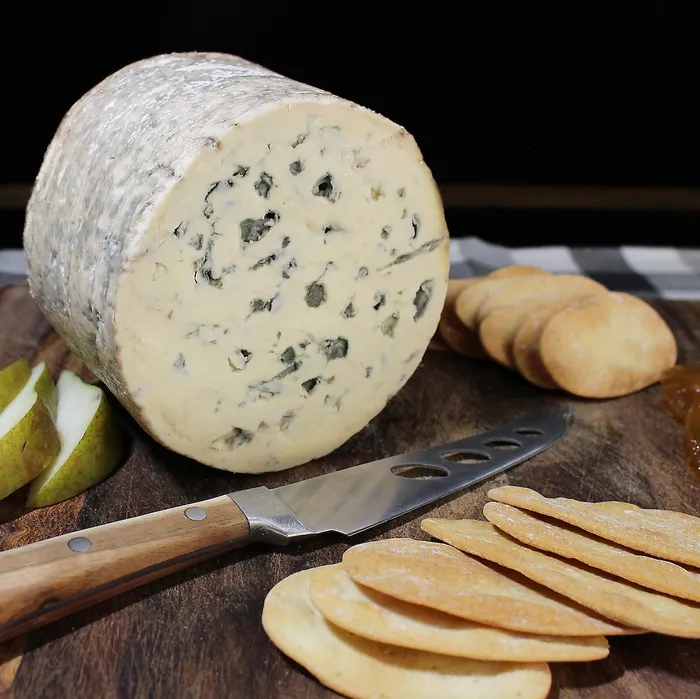
Food that goes well with Fourme d’Ambert:
| Category | Foods |
|---|---|
| Fruits | Pears, Apples, Figs, Grapes, Dried Apricots, Prunes |
| Nuts | Walnuts, Almonds, Hazelnuts |
| Breads | Baguette, Whole Wheat Bread, Rye Bread, Crackers |
| Meats | Prosciutto, Salami, Serrano Ham |
| Jams/Preserves | Fig Jam, Red Onion Chutney, Pear Preserve |
| Vegetables | Roasted Beets, Arugula, Spinach |
| Desserts | Dark Chocolate, Honey |
| Condiments | Honey, Balsamic Glaze |
| Other Cheeses | Camembert, Brie, Roquefort (for a cheese board) |
Also read: What Fruit Goes on a Charcuterie Board?
Beverage that goes well with Fourme d’Ambert:
| Category | Beverages |
|---|---|
| Wines | Sauternes, Port, Riesling, Beaujolais, Cabernet Sauvignon |
| Beers | Belgian Ales, Stout, IPA, Saison |
| Spirits | Brandy, Whisky, Armagnac |
| Non-Alcoholic | Sparkling Water, Apple Cider, Grape Juice |
These pairings can help enhance the flavor of the Fourme d’Ambert. For example, the sweetness of a Sauternes or Port can balance the tanginess of the cheese, while the bitterness of an IPA or Stout can complement its creaminess. Similarly, a non-alcoholic beverage like apple cider or grape juice can provide a refreshing contrast to the cheese’s rich flavor.
Also read: Best Wine and Cheese Pairings: The Ultimate Guide
The History of Fourme d’Ambert

The Fourme d’Ambert is a semi-hard French blue cheese and one of France’s oldest cheeses, with its history dating back to Roman times. The term “fourme” is derived from the Greek word ‘phormos,’ which evolved into ‘forma’ or ‘(caseus) formaticus’ in Latin, meaning mold, which is the origin of the word ‘Fromage’, the French term for cheese.
The production of this cheese in the Haut-Forez region undoubtedly harks back to the Middle Ages when an agro-pastoral system was maintained and preserved. Documentation of the Fourme d’Ambert’s history can be traced back to the first feudal eras, around the 8th century, but it is likely that the cheese was already being made in the region before this time.
Produced in the Auvergne region, the Fourme d’Ambert has its origins in Foréz pastoralism, a system traditionally managed by women while the men remained in the valley and plain to ensure other tasks. The cheese is usually made from raw or pasteurized cow’s milk.
The Fourme d’Ambert is characterized by its rich and creamy texture and a thin, yellowish rind mottled with sandy molds.
Frequently Asked Questions
1. How to pronounce Fourme d’Ambert?
The French cheese Fourme d’Ambert is pronounced as “foorm dahm-bair”. The “r” in “fourme” and “d’Ambert” is softly pronounced, typical of the French language. The final “t” in “d’Ambert” is silent.
2. What does Fourme d’Ambert mean?
The name “Fourme d’Ambert” comes from two French words: “fourme,” which dates back to the Middle Ages and refers to the shape of the cheese, and “Ambert,” which is the town in the Auvergne region of central France where the cheese is traditionally made.
So, “Fourme d’Ambert” essentially means “the cheese mold from Ambert.” The term “fourme” itself is derived from the Latin word ‘forma’ meaning ‘shape’ or ‘mold’, indicating the cylindrical shape in which the cheese is produced.
Also read:
- What is Salers Cheese? A Flavorful Journey into France’s Cantal Mountains
- What is Morbier? The Tale of a Two-Layered Cheese
- What is Langres? Tasting the Unique Flavor of Champagne Ardenne
- What is Chevrotin? The Savory Secret of Savoie
- What is Livarot Cheese? The Pungent Delight from Normandy
- What is Reblochon de Savoie? A Taste of the French Alps
- What is Vacherin Mont d’Or? The ‘Holy Grail’ of Soft Cheeses
